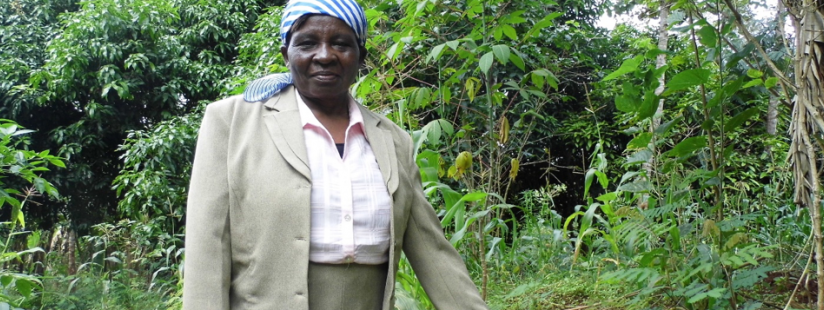
Photo Credit: Lori Reid/FHI 360
Drought is threatening livelihoods in the Horn of Africa and is increasing the vulnerability of households to food insecurity, economic shocks and resource-based conflicts. Approximately 12 million people in the region are expected to need food aid in the coming months. A response that protects household assets and helps people grow their own food and minimize livestock losses is critical to their survival.
Timely interventions, such as fodder production, are needed to keep livestock healthy, prevent a rise in hunger and deepen community engagement in building resilience to shocks. Beyond the drought, fodder production is also a system-level response to growing demand for animal source foods and the rapidly expanding dairy sector in Kenya in particular. This expansion has many positive aspects but does put pressure on sourcing the necessary animal feeds, further reason to explore and develop efficient and integrated animal feed and fodder production and the integration of crop-livestock production systems to ensure high land productivity.
But, fodder production requires technical knowledge that many smallholder farmers do not have.
The System-Wide Collaborative Action for Livelihoods and Environment (SCALE+) approach brings stakeholders together to bridge this knowledge gap. SCALE+ can help implementers deepen their community engagement to understand the local complexities of food insecurity and chart new ways to address this problem.
Growing fodder, such as hay or straw, to feed domestic animals has resurged, especially as water becomes less available. Fodder can be produced on under-utilized or hard to farm land and grown along boundaries and pathways. It can be integrated in-between crop cycles as green manure and cover crops, helping to curb soil erosion and improve soil quality whilst producing valuable animal feed.
Fodder systems not only use less water but also offer many other advantages, including higher productivity through nutritional value, that is transferred from the plant to livestock and from livestock to people. For many smallholder farmers, fodder provides a low-cost source of feed and nutritional supplement that requires little to no cash investment.
In Kenya, the Agricultural Partnerships for Productivity and Prosperity project, supported by the U.S. Agency for International Development (USAID) and launched in 2006, worked to increase the use of high-nutrition fodder plants to improve the productivity, resilience and incomes of small dairy farmers. More than a decade later, those efforts are still in place, providing smallholder farmers with seed distribution and extension services, such as pruning trees or introducing new varieties. Central to the success of this project is stakeholder engagement, which FHI 360 facilitated using the SCALE+ approach.
In just one year, and with less than $250,000, the use of SCALE+ more than tripled the number of farmers reached in Kenya in the previous eight years, bringing the total number of farmers reached to more than 100,000. This provided a cost-effective, scalable approach to address the needs of vulnerable households like Mercy’s. For Mercy, who was recently widowed, growing fodder can also be a source of income from the sale of fodder seeds. As Mercy proudly states, “With the income of my goats and seeds, I am now able to feed my family and pay for piped water and electricity.”
By growing fodder, vulnerable households can provide a great source of nutrition to a wide range of animals. With good nutrition, livestock have a better chance of survival, as do vulnerable households. But, to see real benefit, key community stakeholders must be engaged to improve technical know-how on issues such as raising seedlings in a nursery or feeding suitable leaves to livestock in correct proportions with other livestock dietary needs. SCALE+ engages the “whole system” to better understand existing resources. The approach operates on the premise that technical solutions, like fodder, must be addressed within the context of a larger system if scale is to be achieved and change is to be lasting and transformative.
SCALE+ has proven to be the connective tissue needed to help communities adapt to ever-changing environmental stressors and should be considered as a very effective intervention to mitigate the upcoming food insecurity situation in the Horn of Africa.
Learn more about SCALE+, including tools and case studies from more than a decade of learning that implementing organizations can use today.
